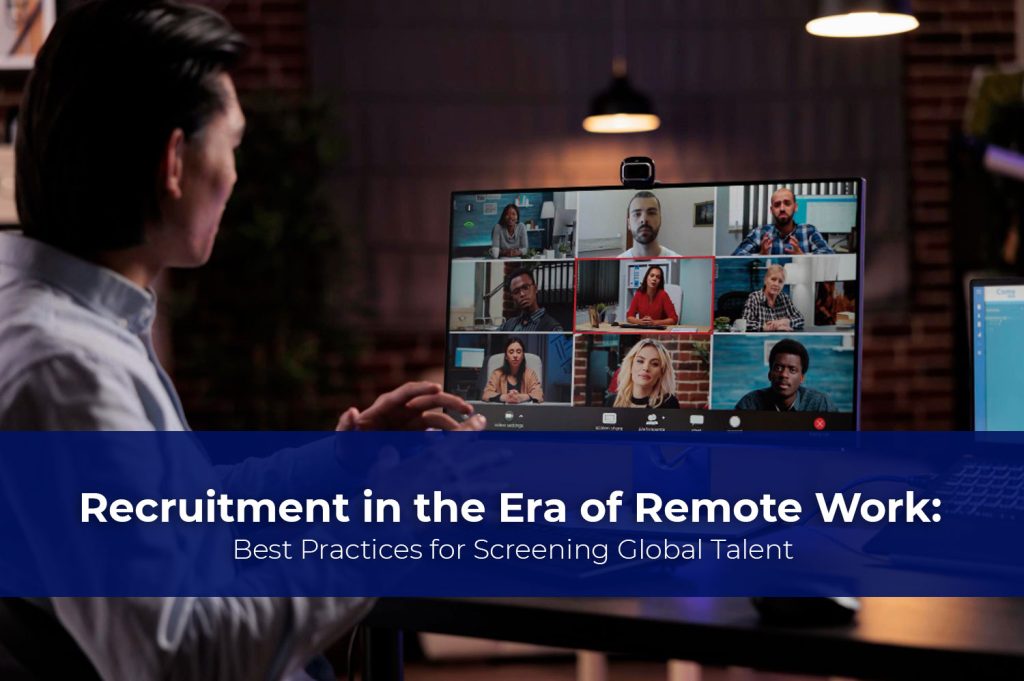How to Recruit and Retain Flexible Workers

“The key for us, number one, has always been hiring very smart people.” – Bill Gates, Microsoft
Since the pandemic took hold of the blue ball we call home and shook our very foundation as a species, we have been bombarded with news, articles, and all kinds of content. Yes, this is another article for you, but one we know will help you! Do you remember hearing about the steep rise in the demand for remote or flexible working environments from job seekers? This growing population of flexible workers make up a significant chunk of the current job market, making recruitment and retention a challenge for many companies.
In fact, according to a LinkedIn report in 2020, there was a 60 per cent rise in the searches for the term ‘remote work’. What’s more, is that there was a 189 per cent growth in the number of applicants for such positions. Fair to say that flexible workers are slowly but surely making waves in the job market. These days, flexible work models work not only to get employees but to encourage them to stay on as well. Now, when we say flexible work models we refer to remote working or the hybrid work model.
So, the obvious answer is to just roll out some flexible work models and call it a day right? Well, of course, it could never be that simple. While having such models can attract flexible workers, it is no guarantee. The secret rather lies in knowing how to manage flexible work, which is what we will be talking about. More specifically, we will talk about how to recruit these workers and of course, how to retain them.
Table of Contents
ToggleEnsure a Strong Line of Communication
When we were all working from the comfort of our homes, there was that one point where we felt communication was tough. To be fair, communication in an office setting is tough enough as it is. Now, add to that the speedy nature of working from home and having the need to talk to, or confer with colleagues at once. It can be frustrating and slows down the whole process when you’re waiting for that one reply or someone to pick up the call.
Having said that, it doesn’t mean that people are liable to answer immediately when working remotely or in a hybrid model. This shines a light on one of the few downfalls of working from home, which is the expectation placed on people to be available almost 24/7. This is not how it should be nor is it what we are suggesting.
What we are suggesting is that during work hours, employees should have plenty of opportunities and channels to reach out and get a response so the operations run smoothly. You could use a project management platform, set up a WhatsApp group, hold daily team meetings to plan the day, and so on.
Be sure the celebrate the small wins.

Double Down on the Onboarding Process
Remote work is, as we already established, challenging enough. When you consider hiring remotely, that is a whole other ball game. Hiring flexible workers remotely has many obstacles. One of the most prominent issues of which lies in the onboarding process. When you hire someone in a pre-pandemic kind of situation, showing the recruits around is crucial in helping them slip into the role. This may not be the case when you are hiring flexible workers for remote or hybrid positions. However, that first impression is key.
Having that in-person meeting, even if it’s just for a day, can go a long way in establishing some semblance of structure. If not, you can always try the tried and true Zoom call and have a virtual walkthrough.
Celebrate Employee Successes and Milestones
When someone hits a milestone, masters a new skill or goes above and beyond the call of duty, it’s easy to shake their hand, congratulate them and move on with the rest of the day. At least this is the case in the physical office. When it comes to flexible workers, it may not always be the case. It takes a little more effort, but it will go a long way. Celebrate the win with them by having a virtual Zoom party, sending out a social media post to show appreciation or just a well-thought out email.
“Management is nothing more than motivating other people.” – Lee Iacocca, ford
Adopt an Open-Door Policy (Virtual and Real)
One of the most important parts of retaining flexible workers is to have an open-door policy. It can encourage effective communication, build bridges between employees, and help boost overall morale and transparency. Just because you don’t have a physical door between you, doesn’t mean that this approach should be abandoned.
It comes back to our earlier point about allowing employees to reach you. Show them that you are available to take calls, or respond to a message. Share your calendar with the team and let them come to you when they are free.
Create Virtual Social Rooms
Socializing is a crucial aspect of maintaining a high level of morale and motivation in the workspace. This is true regardless of whether it is in person or online. When you are dealing with flexible workers, you are dealing with crisscrossing schedules, tight deadlines, delays and so on. This leaves a lot of gaps in communication and just general socialization.
Take time out of the day or out of the week to gather everyone in a physical or virtual space so everyone has a chance to catch up. Talk about anything but work! This could include games and activities or just a general talk about your lives.

Help employees transition into flexible work models.
Help with the Home Setup
Being forced into work from home mode was hard. We all had to adjust and make the transition to it. That’s why it is important to support your flexible workers with their home-office setup. Make sure that they have all the equipment they need to get the job done. Things like a desk, a chair with back support, a phone and a laptop can go a long way in helping them work comfortably and efficiently.
Offer Expense Allowance
When your team works from the office, they have access to things like free coffee, tea and maybe even snacks right? However, when they are working from home, they no longer get the free stuff. Everything becomes out of pocket. If they are still doing the same job, just from a different type of office, why shouldn’t they have access to the same amenities like tea and snacks?
You could set up a small expense allowance for them, which can allow them to work from a coffee shop or cafe. They not only get their morning coffee, but the change of scenery might be nice for them instead of being cooped up in their home office all day.
Make Sure Remote Working is Flexible
Just because a position is listed as remote working, doesn’t necessarily mean that it is flexible. Managers or team leaders may fear the loss of control when their employees are not in their immediate vicinity. This puts flexible workers at risk for micromanagement. A big reason why so many people these days are opting for remote work is that added level of flexibility.
Flexible workers are taking up such roles so that they can be productive where they are most comfortable so that they can play with their kids, do the laundry or the dishes on their lunch break and manage their home lives parallelly.
In light of the recent uptick in the demand for flexible work, it should be noted that we have also seen a boom in on-site roles. While remote and hybrid models are great, they too have downsides like that feeling of being stuck in one place. Having said that, remote work isn’t for everyone. Some people are just more inclined to work outside in dynamic and active job roles. In Canada, we have seen a growing demand for people who qualify for positions in the skilled-labour industry like millwrights and electricians. If you think you fall into the latter category, check out our Bumsa website and get in touch with us!





























